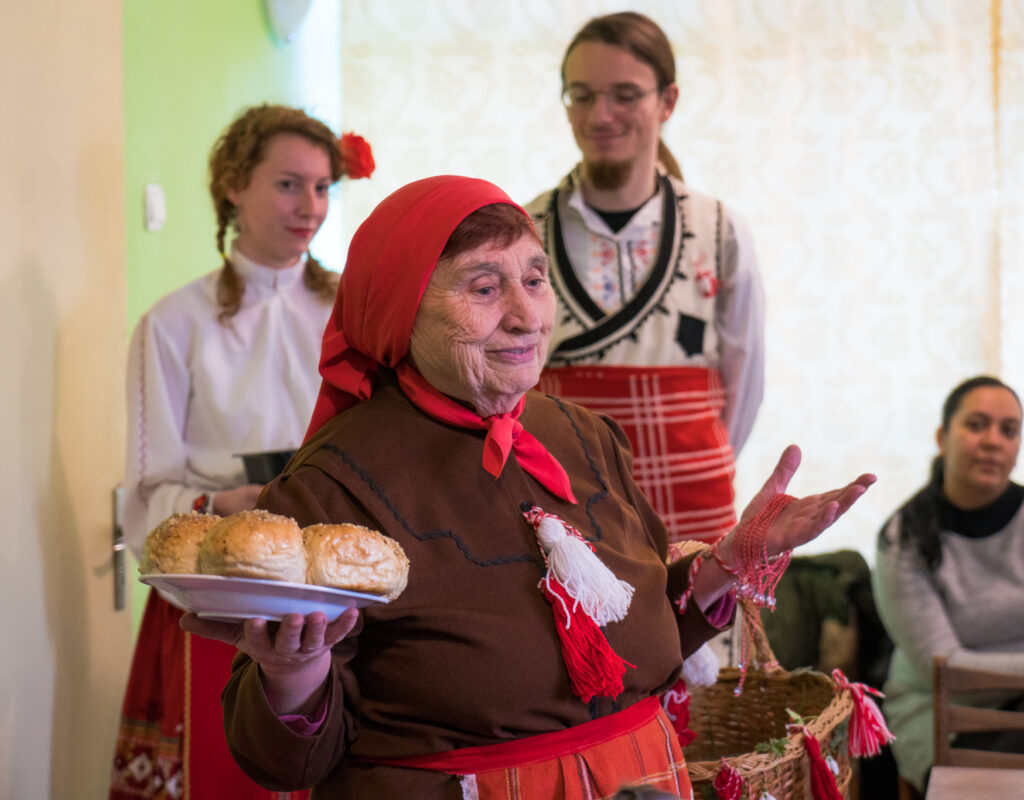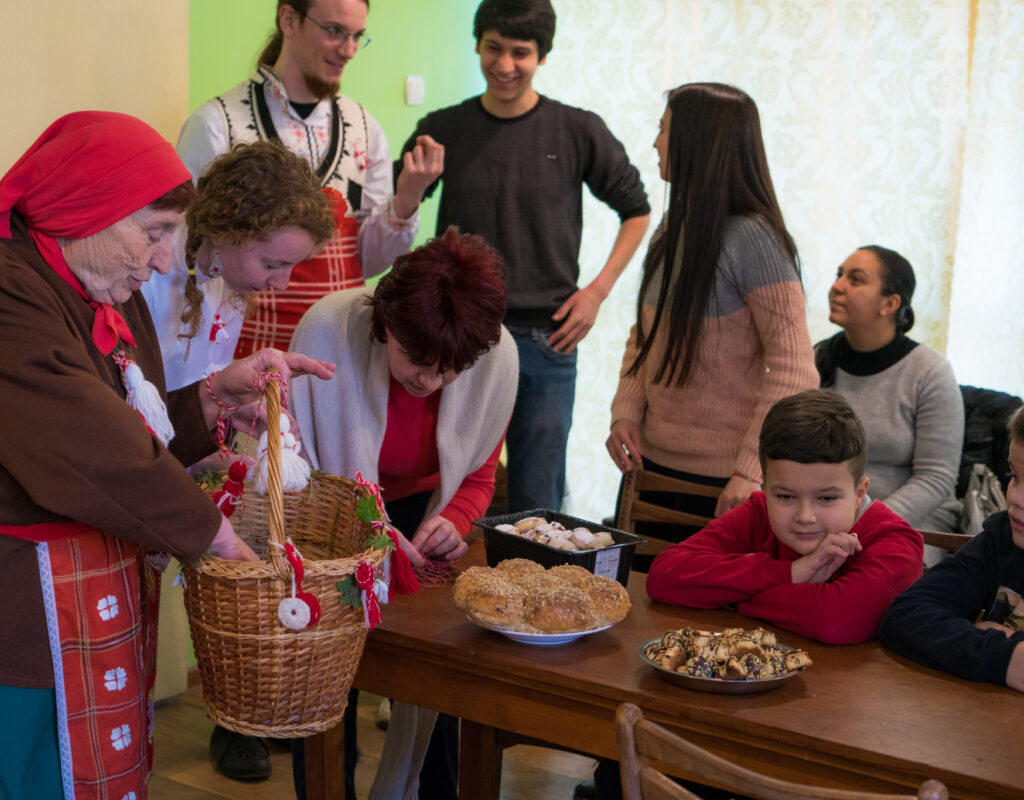BABA MARTA DAY
The cultural practice of March- ''Martenitsa'' (Mартеницa)
Tradition and Ritual
The habit isn’t a Bulgarian exclusivity, but the legend's existence in other countries is a probable legacy of the time of expanded Bulgaria and a testimony of the porosity of myth inside the Balkans countries. But it is particularly popular here.
Martenitsa tradition consists of breeding bracelets or little dolls, often by using white woolen or red tainted. Bulgarian people offer themselves the said bracelets on the 1st of march and wear them until they see a blossoming tree: when they do, they put them on those trees, as a guarantee of prosperity.
Making the little bracelet is a task that anyone can manage ( with a bit of training of course) and it’s often the children who are the most enthusiastic about the craft of those little bits of patrimony.
It is still very popular in the country and you will often see people with a lot of bracelets on their wrists or others pining little dolls of Pizho and Penda on their coats.
Nowadays, martenitsa tends to evolve by adding beads or even adding green treads to the white and red ones, which give a very Bulgarian mix of color.
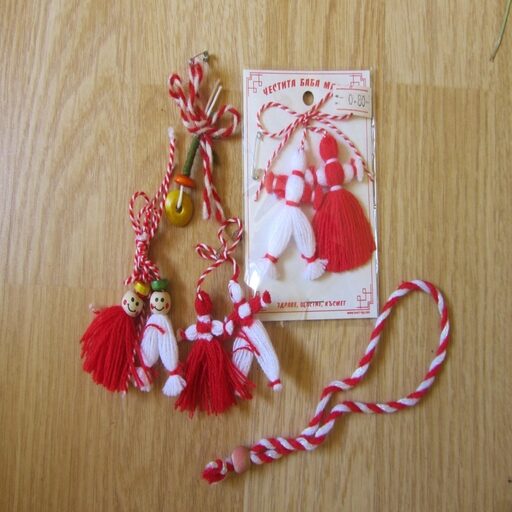
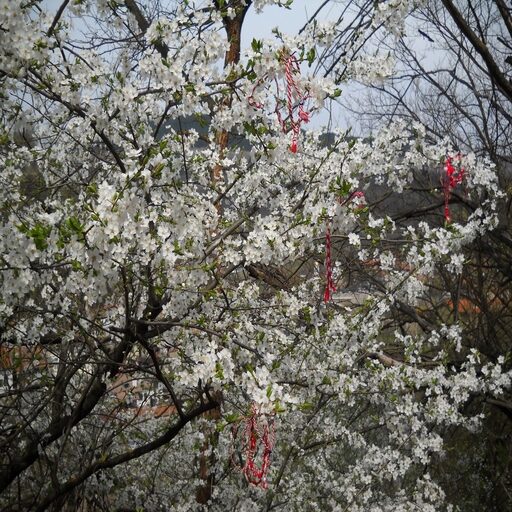
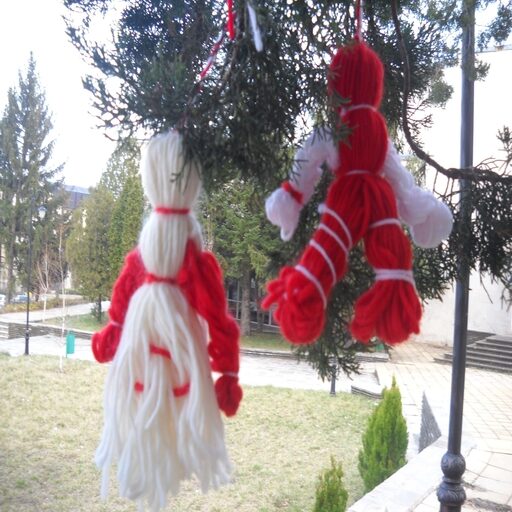
Origin and Legend
Like a lot of traditional customs, several legends exist regarding the origin of martenitsa, some of which are more popular than others.
Most legends, however, imply the celebration of spring and the renewal of nature. Usually, spring itself is personified by the figure of Baba Marta, an old lady embodying the month of March. Some other sources suggest that the tradition was linked to ancient Roman agrarian rites regarding the god Mars.
A later story links the tradition to the history of Bulgaria itself by saying that after the decisive battle of Ongal, where the Bulgarian army prevails over Byzantine forces, the Khan sent doves with white treads attached to announce the Bulgarian victory. But the doves were shot by a Byzantine archer and part of the treads was soaked in blood, giving the white and red combination of threads we know today as martenitsa.
But the most famous tale regarding the ancient practice is probably the tale of Pizho and Penda.


